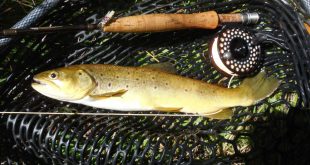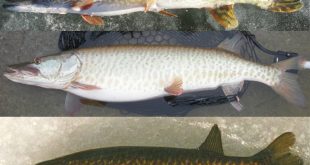Story and Photos by Sarah Kocher
Simply put, JoLeisa Cramer’s job has one focus: how things spread.
Cramer is a technician for the Nebraska Invasive Species Program, and half of her job is about spreading awareness of the destruction invasive species almost always leave in their wake. The other half involves testing lakes for aquatic invasive species to prevent their introduction or growth. She spreads one to stop the other.
“Prevention is the best tool we have for invasive species,” Nebraska Invasive Species Program Coordinator Allison Zach said. “Invasive species are hard to control once they’re established; they’re very adaptable and have few predators.” Like a virus, the only way to minimize the damage of an invasive species is to prevent its spread. According to Zach, these invasive species often ruin recreational activities like boating, fishing, and wading by interrupting the lake’s established balance.
The Testing Process
Aquatically, the zebra mussel is number one on the program’s Most Wanted list. However, detecting the mussel’s presence is made difficult by its microscopic size during its larval stage. The technicians use incredibly fine mesh plankton nets connected to a length of rope, which they pull through the water either vertically (Cramer does this from a dock) or horizontally (thrown straight from the shore). According to Game & Parks Fisheries Management Section Manager Dave Tunink, boat ramps and rocky areas are the two best spots to sample for zebra mussels, because mussels establish both where they enter and where rocks offer them their preferred habitat.
“In the natural resources field, you don’t get support like this unless you show the data that it is needed,” Cramer said. So she gathers the data.
After at least three tosses in one location, what has dribbled through the mesh into a collection container attached to the bottom is then deposited into another container, one containing ethyl alcohol to preserve the sample. There isn’t much—the plankton sample, a sixth of an inch of murky green sludge, looks like a spinach smoothie gone wrong—but it’s enough for a national facility in Montana, who examines the location-tagged and dated samples under a microscope to look for intruders.
Every lake is sampled once a month, Tunink said, except for large reservoirs. These are sampled twice.
“Somewhere, I’m sampling a lake at least every other day,” Cramer said.
Increasing Reach
But sampling is only one part of a program in which Cramer said employees wear many hats. One hat the Invasive Species Program is trying on for size is a bait shop audit program, which it will begin for the first time this summer. During an audit, inspectors will administer questionnaires and surveys and look at in-house bait samples, Zach said.
“Literature shows they [bait shops] are the number one way angers get their information,” Tunink said. As they audit, Tunink hopes Game & Parks can further tap into that information flow to ensure boaters and anglers know what they need to about invasive species.
This programming expansion comes partly from surveys, completed by technicians like Cramer when they inspect boats for contamination sources, and partly from cooperation between invasive species programs in the greater Midwest. After all, Zach points out, rivers don’t follow state borders.
With their mandatory boat inspections and prevention-supportive fees on motorboat licenses, “Colorado and Wyoming are kind of the Cadillac of programs,” Zach said. In this way, it is from cooperation with boaters in and out of state that people like Zach, Tunink and Cramer can tailor a Nebraska Invasive Species action plan to better protect lake environments and the recreational opportunities they provide.
“[Invasive species] is a buzzword, and a lot of people don’t understand it completely,” Cramer said. “If we spread the word to anyone that’s around the lake, that’s a win.”
 Nebraskaland Magazine
Nebraskaland Magazine



